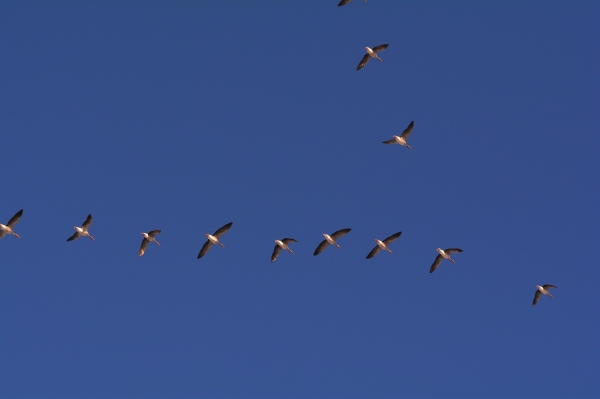In looking up at the sky during these early weeks of spring, you may very well see a flock of birds moving in unison as they migrate north.
In looking up at the sky during these early weeks of spring, you may very well see a flock of birds moving in unison as they migrate north. But how do these creatures fly in such a coordinated and seemingly effortless fashion?
Part of the answer lies in precise, and previously unknown, aerodynamic interactions, reports a team of mathematicians in a newly published study. Its breakthrough broadens our understanding of wildlife, including fish, who move in schools, and could have applications in transportation and energy.
“This area of research is important since animals are known to take advantage of the flows, such as of air or water, left by other members of a group to save on the energy needed to move or to reduce drag or resistance,” explains Leif Ristroph, an associate professor at New York University’s Courant Institute of Mathematical Sciences and the senior author of the paper, which appears in the journal Nature Communications. “Our work may also have applications in transportation—like efficient propulsion through air or water—and energy, such as more effectively harvesting power from wind, water currents, or waves.”
Read more at New York University
Photo Credit: SusiB via Pixabay




